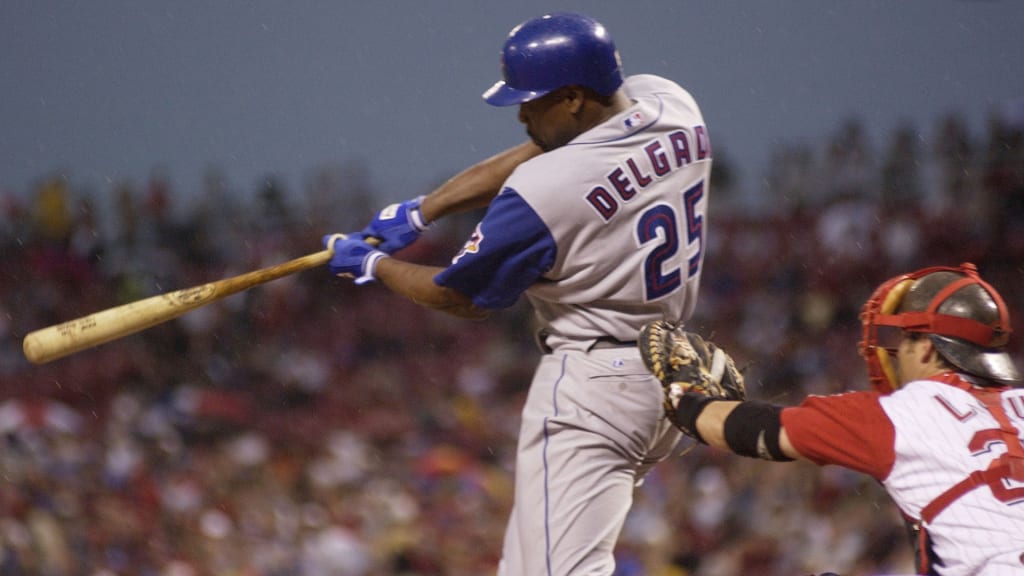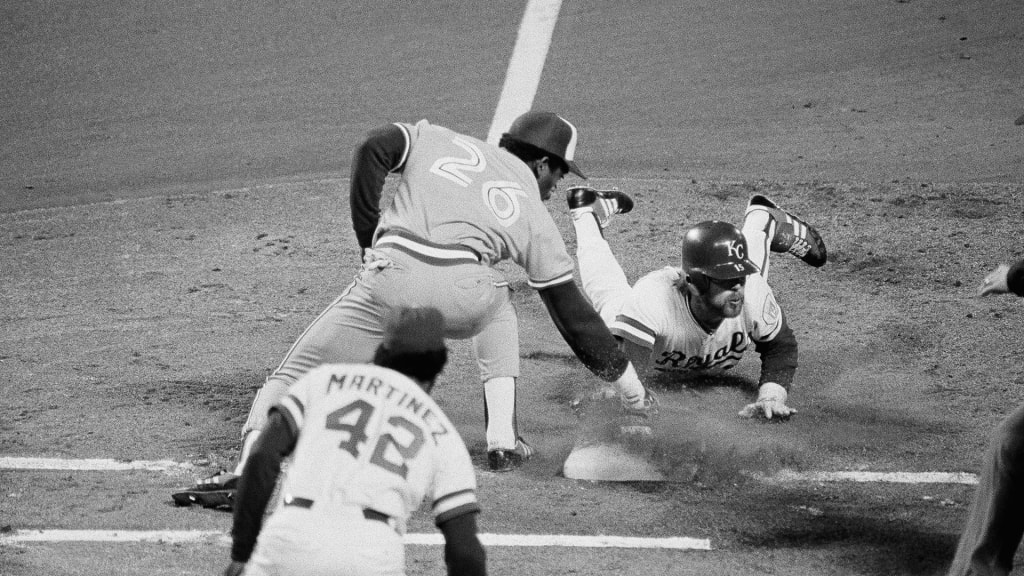
No one loves a good debate quite like baseball fans, and with that in mind, we asked each of our beat reporters to rank the top five players by position in the history of their franchise, based on their career while playing for that club. These rankings are for fun and debate purposes only … if you don’t agree with the order, participate in the Twitter poll to vote for your favorite at this position.
Here is Keegan Matheson’s ranking of the top five first basemen in Blue Jays history. Next week: second basemen.
1) Carlos Delgado, 1993-2004
Key fact: 34.7 fWAR is fifth-highest in club history
One of the greatest hitters to wear a Blue Jays uniform and still, somehow, underrated following an incredible 17-year career.
The Puerto Rican slugger actually came up through the Minor Leagues as a catcher but soon found a home at first base in Toronto, where he launched 336 homers and drove in 1,058 runs over 12 seasons. He still owns Blue Jays records in those categories, along with doubles (343), walks (827) and runs scored (889). Delgado’s career .949 OPS in Toronto also tops all Toronto players.
Delgado’s career stands out for the consistency of his elite talents at the plate, and his peak years included some massive numbers. In 2000, Delgado’s best season at 28 years old, he appeared in all 162 games, hitting .344 with a .470 on-base percentage and a 1.134 OPS.
"I had some potential, but I kind of taught myself how to hit and how to make adjustments, and I think that's a big thing in this game," Delgado said in 2013, when his name was added to the Level of Excellence. "I put a lot of time and effort into figuring out what I was good at, how the teams were pitching me, how they were trying to get me out and how can I maximize my swing and my approach to try and be the best player that I could."
All this considered, it’s difficult to agree with Delgado getting just 3.8 percent of votes in his first and only year on the Hall of Fame ballot. For over a decade, Delgado, much like teammate Roy Halladay, was worth the price of admission on teams that weren’t always making a push for October.
2) John Olerud, 1989-96
Key fact: .395 on-base percentage is highest in club history
Olerud was drafted by the Blue Jays in 1989 and jumped right to the Major Leagues without seeing a pitch in the Minors. He was ready, too, with an extremely advanced plate approach that made him one of the toughest outs in baseball throughout his career, with an on-base percentage that consistently hovered around .400.
The 1993 season is when Olerud made some noise with his other chase for .400 … batting average. Olerud was hitting .400 as late in the season as Aug. 2 and pushed it back up to .391 on Aug. 27, but he faded down the stretch to finish with a .363 average.
Olerud was a different type of first baseman from Delgado, peaking at just 24 home runs over a 17-year career of his own, but he finished his time in Toronto with more walks (514) than strikeouts (430), and his .866 OPS ranks seventh in club history.
3) Fred McGriff, 1986-90
Key fact: Traded with Tony Fernandez to the Padres in 1990 for future Hall of Famer Roberto Alomar and World Series hero Joe Carter
Crime Dog was built for power and, when he was at his best, few did it better. From 1988-97, only Barry Bonds and Mark McGwire hit more home runs and McGriff ranked eighth in WAR over that span, behind seven eventual Hall of Famers.
McGriff fell off the Hall of Fame ballot recently after 10 years of eligibility, but it’s worth considering how differently his career would be viewed if he had scraped seven more balls over the wall, which would have moved him into the magical 500 home run club.
4) Willie Upshaw, 1978, '80-87
Key fact: The organization’s first-ever Rule 5 Draft choice in 1977
After Doug Ault manned first base in the club’s inaugural season and John Mayberry took over for a few years, Willie Upshaw emerged as the club’s first baseman through most of the 1980s. The former Yankees Draft pick enjoyed a four-year peak with the Blue Jays from '82-85.
Over those four seasons, Upshaw launched 82 home runs with 328 RBIs, hitting .282 with an .815 OPS. Upshaw’s bat was a key piece of the lineup in ’85, when the Blue Jays won 99 games before falling to the Royals in the American League Championship Series.

5) Justin Smoak, 2015-19
Key fact: Tied with teammate Edwin Encarnacion for fifth in the AL with 38 home runs in 2017
Smoak joined the Blue Jays prior to the 2015 season as a waiver claim, a far fall for a hitter still in his late 20s who’d once been considered one of the game’s best up-and-coming sluggers. By the time he left this past offseason, Smoak was an All-Star, mentor and fan favorite.
The 2017 season was Smoak’s long-awaited breakthrough, as he hit 38 long balls with an .883 OPS. Flash forward to '19, and he survived as one of the few holdovers from Toronto's playoff years, which became evident as the youth movement picked up steam more recently. Smoak saw it happening, but he adapted, earning respect in every corner of the organization.
“Next thing you know, I was the old guy,” Smoak said, looking back. “It was different, but I felt like I got better at being that guy for them when they needed me to be that guy. It wasn’t all about me at that point, it was more about what I could do to help. That’s what I tried to do.”
Honorable mentions
Edwin Encarnación appeared in more games as a DH than a first baseman with the Blue Jays, so he will be ranked in that group. I’m confident you can guess his rank, too … Adam Lind (7.0 WAR) and Lyle Overbay (6.5) were on the cusp ... John Mayberry (5.2) was worthy of consideration for his play with the expansion Blue Jays.
